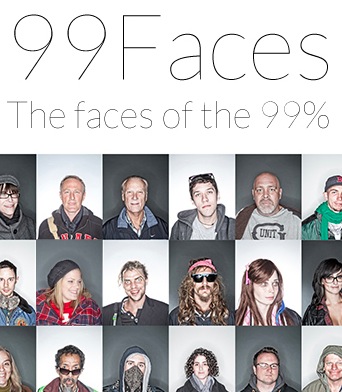 Tents, marches, squabbles and police — these have become the symbols of the Occupy Toronto movement in recent weeks.
Tents, marches, squabbles and police — these have become the symbols of the Occupy Toronto movement in recent weeks.
The occupation of St. James Park at Jarvis and King Streets has undoubtedly raised myriad political, philosophical and legal questions: Are the protesters compromising public safety in exercising their democratic rights? Can the protesters be evicted from a public space owned by the city? Does civil disobedience in the form of occupation bring us closer to appreciating the need for social justice and economic equality?
For some, the movement has only ever raised one question: “When will they all just get a job?”
Controversy regarding Occupy Toronto’s methods and philosophies aside, one of the most persistent criticisms of the movement has been that it has failed to articulate a clear point, has not succeeded in initiating a meaningful dialogue with the very players whose attention it demands, and has remained largely faceless.
It is the movement’s apparent incoherence and “facelessness” that photographer Richard Gottardo and web designer and developer Boston Dell-Vandenberg aimed to dispel by putting together “99 Faces” project, an online gallery of the photographs and personal stories of 99 protesters participating in Occupy Toronto. Gottardo tells me that the project “seemed like a great way to be able to get people to relate to the people of the movement other than just the movement itself.”
To do this, Gottardo and Dell-Vandenberg brought a mobile portrait booth to St. James Park and asked 99 occupiers to reveal their identities by way of a photograph and an answer to the question “Why are you here?” Gottardo and Dell-Vandenberg recorded all 99 answers, and matched them with each protester’s photograph, to create both a visual collage and a collective story of the protest.
Some of the answers they received are idealistic (“I’m here to see change happen”); some are deeply rooted in a difficult reality (“I’m here because I remember being poor — the shelters, food banks, etc. If I wasn’t here my conscience wouldn’t leave me alone.”) All are striking and personal, and emphasize the individual human aspects of a movement whose message and importance may be disappearing quickly in its collective presence.
Gottardo and Dell-Vandenberg hope to display the photographs which make up 99 Faces in a gallery.
Maria Gergin is a Toronto articling student. Her column, Leisure Aid, appears every other Friday here at lawandstyle.ca.

